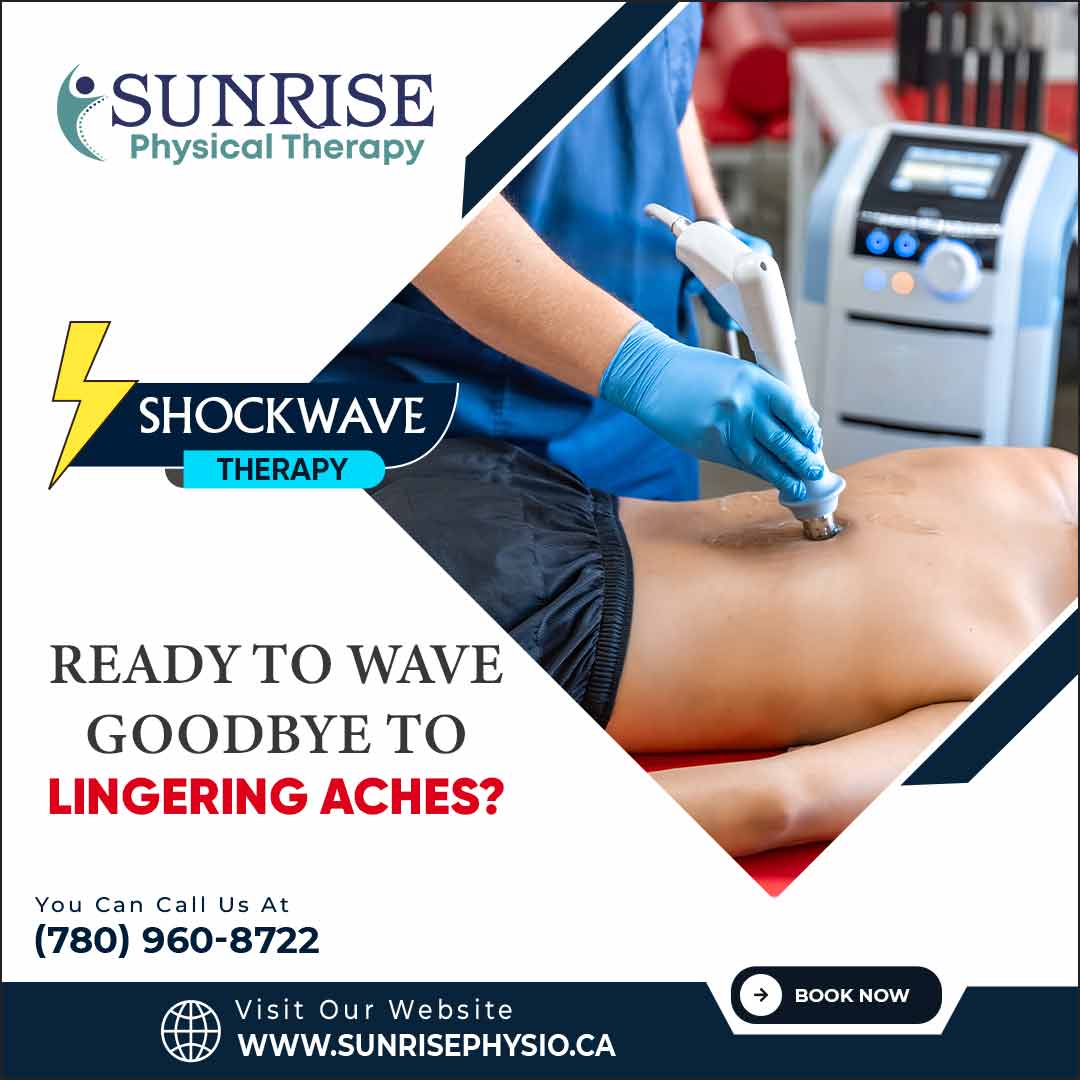
Shockwave therapy is a non-invasive treatment that has gained significant attention for its ability to promote healing in various musculoskeletal conditions. shockwave therapy Spruce Grove At Sunrise Physical Therapy , we have also found shockwave therapy to be highly effective in treating chronic pain and injuries. But its benefits extend beyond just musculoskeletal issues—it can also be a powerful tool in supporting wound healing.
How Shockwave Therapy Supports Wound Healing
Stimulating Blood Flow and Oxygenation
One of the primary mechanisms by which shockwave therapy aids in wound healing is by improving blood flow to the affected area. The acoustic waves generated during the therapy stimulate the blood vessels, encouraging vasodilation (the widening of blood vessels). This increase in blood flow delivers more oxygen and essential nutrients to the wounded tissues, accelerating the healing process. Oxygen plays a crucial role in tissue repair, as it supports cellular metabolism and helps cells divide and regenerate.
Enhancing Collagen Production
Collagen is a key component of the body’s healing process, as it provides structure and strength to the newly formed tissue. Shockwave therapy has been shown to stimulate fibroblast activity—the cells responsible for collagen production. By promoting the production of collagen fibers, shockwave therapy helps the wound heal more efficiently and with stronger, more durable tissue. This is especially important for chronic wounds, such as diabetic ulcers or post-surgical wounds, that require more support to close effectively.
Reducing Inflammation
Chronic inflammation can significantly delay the healing of wounds, as it prevents proper tissue regeneration and may cause further damage. Shockwave therapy has anti-inflammatory effects, which can help reduce swelling and improve the healing environment. By decreasing inflammation, shockwave therapy prevents further tissue damage and accelerates the regeneration of healthy cells, faster recovery times for patients with non-healing wounds.
Breaking Down Scar Tissue
Scar tissue is a natural part of the healing process but can become problematic if it forms in excess or improperly. Shockwave therapy helps break down excessive or dense scar tissue that can impede proper healing. By targeting these areas, shockwave therapy encourages the formation of healthy tissue and improves the range of motion and flexibility around the wound area. This process is particularly useful in patients who have developed contractures or excessive scarring after surgery or injury.
Stimulating Stem Cells for Repair
Recent studies have shown that shockwave therapy can also stimulate the body’s natural repair mechanisms, including the activation of stem cells. Stem cells are critical for regenerating damaged tissue and supporting wound healing. By activating these cells, shockwave therapy not only speeds up the healing of wounds but also improves the overall quality of the tissue that forms during the recovery process.
What to Expect from Shockwave Therapy for Wound Healing
At Sunrise Physical Therapy in Spruce Grove, our team uses shockwave therapy as part of a comprehensive treatment plan for wound healing. During a session, a device is used to deliver acoustic waves to the affected area. The procedure is non-invasive, and while patients may feel some discomfort or a slight pulsing sensation, it is generally well tolerated. Treatment sessions typically last between 5 to 15 minutes, depending on the severity of the wound and the area being treated.
Patients may notice improvements in their wound healing process after a few sessions. These can include reduced swelling, faster tissue repair, and decreased pain at the site of the wound. The number of sessions required will depend on the type of wound, its chronicity, and the individual’s overall health condition. Some patients may benefit from a series of treatments, while others may see noticeable improvements after just a few sessions.
Conditions Treated with Shockwave Therapy for Wound Healing
Shockwave therapy is particularly effective for treating chronic wounds, such as:
Diabetic Ulcers: Patients with diabetes are prone to developing non-healing ulcers on their feet and legs. Shockwave therapy can accelerate the healing of these stubborn wounds by improving circulation and stimulating cellular repair.
Pressure Ulcers: Often occurring in bedridden patients, pressure ulcers can be difficult to heal due to lack of blood flow. Shockwave therapy can help break the cycle of poor circulation and inflammation, promoting faster recovery.
Surgical Wounds: Post-surgical wounds, especially those that have become infected or are healing slowly, can benefit from shockwave therapy’s ability to reduce inflammation and encourage tissue regeneration.
Traumatic Injuries: Deep cuts, abrasions, or injuries resulting from trauma can sometimes develop into chronic wounds. Shockwave therapy can aid in the healing process by improving blood flow, reducing scar tissue, and speeding up overall recovery.
Conclusion
At Sunrise Physical Therapy in Spruce Grove, we believe in the power of shockwave therapy not just for musculoskeletal recovery, but also for its incredible ability to enhance the healing of chronic wounds. By improving blood flow, reducing inflammation, promoting collagen production, and stimulating the body’s natural repair mechanisms, shockwave therapy can help patients achieve faster, more effective healing. If you have a wound that is not healing as expected, contact our clinic to learn more about how shockwave therapy can help you get back to full health and function.
#shockwavetherapysprucegrove #shockwavetherapy #shockwavetherapynearme #painfreeliving #extracorporealshockwavetherapy #physicaltherapy #physicaltherapysprucegrove #physicaltherapysprucegrove #sunrisephysicaltherapy